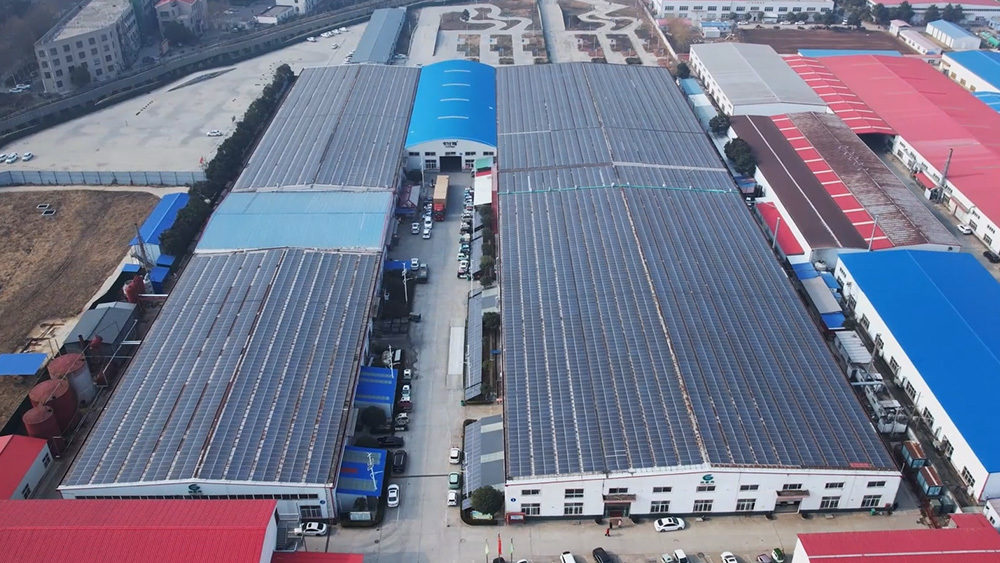
Top Features of Middle Sealing According to Bellows for Chemical Applications
Neways
Top Features of Middle Sealing According to Bellows for Chemical Applications
Introduction to Middle Sealing in Chemical Applications
In the chemical industry, the challenges of maintaining integrity in containment systems are paramount. Middle sealing technologies, particularly in bellows, play a significant role in ensuring that chemicals are securely contained while preventing leaks and maintaining operational efficiency.
This article will explore the **key features** of middle sealing in bellows tailored for chemical applications, emphasizing their importance, design considerations, and overall benefits.
Understanding Middle Sealing Technology
Middle sealing refers to a sealing method where the seal is positioned at the center of the bellows. This specific placement provides several benefits over traditional sealing methods, especially in environments where chemicals pose risks of leakage or contamination.
The Importance of Bellows in Chemical Applications
Bellows are flexible, accordion-like structures that allow for movement while maintaining a seal. They are crucial in applications where there are temperature fluctuations, pressure changes, or vibration. The middle sealing design enhances the performance of these bellows in several ways:
- **Durability**: Middle seals are typically designed to withstand harsh conditions, including corrosive environments and high pressures.
- **Flexibility**: The unique design allows for significant movement without compromising the seal.
- **Enhanced Protection**: Middle sealing provides an additional layer of protection against leaks, which is critical in chemical processing.
Key Features of Middle Sealing Technology
1. Chemical Resistance
One of the standout features of middle sealing in bellows is their remarkable **chemical resistance**. Made from specialized materials such as PTFE or FEP, these seals can withstand a wide range of corrosive chemicals without degrading. This is essential for maintaining the integrity of chemical storage and transport systems.
2. Temperature Tolerance
Middle sealing systems are engineered to function effectively across a broad temperature range. This adaptability ensures that bellows can operate efficiently in extreme conditions, whether in cryogenic applications or high-temperature processes.
3. Pressure Management
The design of middle seals allows them to handle high-pressure environments effectively. This capability is crucial in applications where pressurized chemical reactions occur, ensuring that no leaks develop under stress.
4. Enhanced Flexibility and Movement
The accordion-like design of bellows provides flexibility, allowing for movement in multiple directions. This feature is particularly beneficial in systems that experience shift or vibration, as it reduces stress on the sealing materials and prolongs their lifespan.
5. Easy Maintenance and Replacement
Middle sealing bellows are designed for easy installation and removal. This feature simplifies maintenance procedures, ensuring that any required replacements or repairs can be conducted quickly, reducing downtime in production.
6. Customizable Designs
Manufacturers of middle sealing bellows offer **customization options** to meet specific application needs. This includes variations in size, shape, and material composition, allowing for tailored solutions that fit unique operational requirements.
7. Cost-Effectiveness
While initial investments in quality middle sealing bellows may be higher than standard alternatives, their durability and reliability ultimately lead to cost savings. Reduced leakage incidents and extended service life contribute to lower operational costs over time.
8. Regulatory Compliance
In the chemical industry, compliance with safety and environmental regulations is crucial. Middle sealing bellows are engineered to meet stringent industry standards, ensuring that organizations can operate within legal requirements while minimizing environmental impact.
Applications of Middle Sealing Bellows in the Chemical Industry
Middle sealing bellows are utilized across various sectors within the chemical industry. Their versatility makes them suitable for numerous applications, including:
1. Chemical Processing Plants
In chemical processing plants, where various reactions occur, middle sealing bellows help maintain containment, ensuring that hazardous substances do not leak during operation.
2. Pharmaceutical Manufacturing
In the pharmaceutical sector, where precision and cleanliness are essential, these bellows contribute to maintaining sterile environments and preventing contamination.
3. Waste Management Systems
Middle sealing bellows are also integral in waste management systems, where they help securely transport and contain hazardous waste materials, reducing the risk of accidental releases.
4. Oil and Gas Industry
In the oil and gas industry, where pressurized systems are common, bellows with middle sealing technology provide the necessary flexibility and reliability to withstand fluctuating pressures.
Best Practices for Selecting Middle Sealing Bellows
When considering middle sealing bellows for your chemical applications, several best practices can guide your selection process:
1. Assess Chemical Compatibility
Evaluate the chemicals that will be in contact with the bellows to ensure material compatibility. Selecting the right material will enhance the longevity and performance of the sealing solution.
2. Consider Operating Conditions
Take into account the temperature and pressure conditions of your application. Choose bellows that are designed to handle the specific ranges you expect.
3. Evaluate Movement Requirements
Understand the type of movement the bellows will need to accommodate. Whether it’s axial, lateral, or angular movement, ensure that the design allows for sufficient flexibility.
4. Look for Quality Certifications
Ensure that the bellows meet industry standards and have been certified for quality and performance. This step is vital in ensuring reliability and compliance with regulations.
Conclusion
In summary, middle sealing bellows represent a critical component in the chemical industry, offering unparalleled advantages such as chemical resistance, temperature tolerance, and enhanced flexibility. Their applications span a wide range of sectors, including chemical processing, pharmaceuticals, and waste management.
By understanding the key features and following best practices for selection, organizations can significantly improve their operational efficiency and safety. Investing in quality middle sealing solutions ensures that the integrity of chemical containment systems is maintained, contributing to safer and more efficient processes.
FAQs about Middle Sealing Bellows
1. What are the primary materials used in middle sealing bellows?
Middle sealing bellows are typically made from materials such as PTFE, FEP, and other high-performance polymers that offer excellent chemical resistance.
2. How do I know if middle sealing bellows are suitable for my application?
Assess the chemical compatibility, operating conditions, and movement requirements of your application. Consulting with a manufacturer or supplier can provide additional insights.
3. What are the maintenance requirements for middle sealing bellows?
Routine inspections for wear and tear, as well as periodic replacements based on usage, are essential to ensure optimal performance.
4. Are there specific certifications I should look for when purchasing middle sealing bellows?
Yes, look for certifications such as ISO standards or other relevant industry-specific certifications that ensure quality and compliance.
5. Can middle sealing bellows be customized for specific needs?
Absolutely! Many manufacturers offer customization options to meet unique application requirements, including size, shape, and material composition.
6. How do middle sealing bellows compare to other sealing methods?
Middle sealing bellows offer superior flexibility, durability, and resistance to pressure and temperature fluctuations compared to traditional sealing methods.
Recommended News
Exploring the Advantages of Middle Sealing Pouches with Bellows in the Gift Packaging Industry
Middle sealing pouches with bellows are an excellent packaging choice, particularly in the realm of gift packaging and bags. These pouches combine functionality and aesthetics, offering numerous advantages that can significantly enhance the consumer experience. One of the standout features of these pouches is their unique construction, which incorporates a sealing mechanism in the middle and expan
Middle Sealing Pouches with Bellows: The Ultimate Gift Bag Solution
Middle Sealing Pouches with Bellows: A Smart Choice for Gift Bags Introduction to Middle Sealing Pouches with Bellows In the world of packaging, **middle sealing pouches with bellows** have emerged as a popular choice for gift bags. They combine functionality and aesthetic appeal, making them ideal for various occasions—from birthdays to weddings. These pouches are designed to not only protect
Enhancing Freshness and Convenience: The Benefits of Food Packaging with Recloseable Zippers
In the food packaging industry, the importance of preserving product freshness while providing consumer convenience cannot be overstated. One innovative solution that has gained significant traction is food packaging with recloseable zippers. This packaging option not only enhances the user experience but also addresses several critical factors that modern consumers prioritize. First and foremost,









